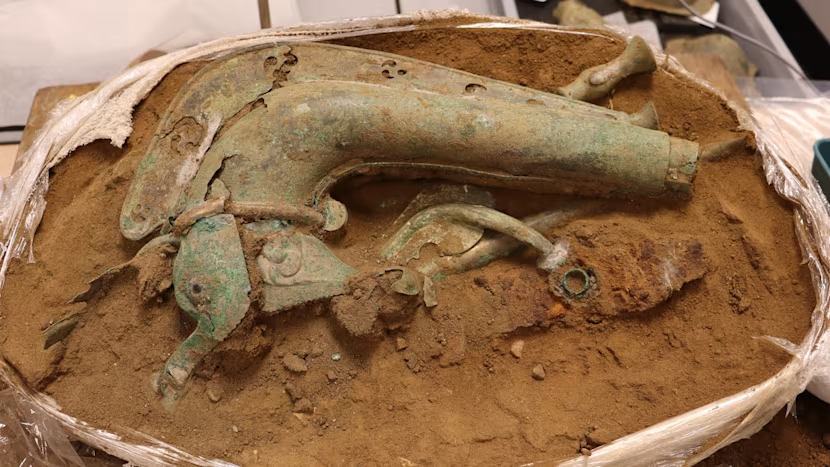A team of scientists has successfully recovered historical DNA from a 2,900-year-old clay brick for the first time. The clay brick, which is now kept at the National Museum of Denmark, came from the royal residence of the Neo-Assyrian monarch Ashurnasirpal II in the antiquity of Kalhu. Around 879 BCE, work on what is now known as the North-West Palace at Nimrud (northern Iraq today) began.
The clay brick from the National Museum of Denmark from which the samples were derived. Credit: Arnold Mikkelsen og Jens Lauridsen. Credit: Arnold Mikkelsen og Jens Lauridsen.
The brick is marked with a cuneiform inscription in the now-extinct Semitic language Akkadian that reads, "The property of the palace of Ashurnasirpal, king of Assyria." As a result, the brick may be precisely dated to the period between 879 and 869 BCE.
The team of experts was able to collect samples from the brick's inner core during a digitalization project at the Museum in 2020, indicating that there was little chance of DNA contamination since the brick was made. The team used a procedure previously used for other porous materials, such bone, to extract DNA from the samples.
Following the sequencing of the collected DNA, the researchers were able to classify plants into 34 different taxonomic categories. The plant families with the highest concentrations of sequences were Ericaceae (heather) and Brassicaceae (cabbage). The Betulaceae (birch), Lauraceae (laurels), Selineae (umbellifiers), and Triticeae (cultivated grasses) families were also represented.
They were able to compare their findings with both contemporary botanical data from Iraq and historic Assyrian plant descriptions thanks to the interdisciplinary team's composition of assyriologists, archaeologists, biologists, and geneticists.
The majority of the brick would have been formed from mud collected nearby the Tigris river, combined with chaff, straw, or animal dung. It would have been molded into shape, then written on in cuneiform script before being dried in the sun. The genetic material trapped within the clay would have been better preserved if the brick had not been burned, but instead allowed to dry naturally.
"We were absolutely thrilled to discover that ancient DNA, effectively protected from contamination inside a mass of clay, can successfully be extracted from a 2,900-year-old clay brick," said Dr. Sophie Lund Rasmussen (Wildlife Conservation Research Unit, Department of Biology, University of Oxford), one of the paper's co-first authors.
The different expertise represented in this study gave the exploration of this material and the findings it produced a holistic approach, making this research endeavor the ideal illustration of the value of interdisciplinary collaboration in science.
In addition to the fascinating information that one brick provided, the study provides as a proof-of-concept and method that might be used to identify previous vegetation and wildlife from numerous other archaeological sources of clay from various locations and time periods throughout the world. Any archaeological site anywhere in the world will almost always have clay materials, and because of their context, they may frequently be dated accurately.
Since they were the most frequent and well-preserved specimens, this study only described the extracted plant DNA. All taxa, including vertebrates and invertebrates, however, may be recognized based on the sample. A significant tool to better comprehend and quantify current biodiversity loss and to get a deeper knowledge of past and lost civilizations would be the ability to provide accurate descriptions of ancient biodiversity.The brick serves as a biodiversity time-capsule of data about a single site and its environs since the inscription on the brick allows us to attribute the clay to a relatively definite period of time in a particular place.
When the study was undertaken, Dr. Troels Arbll, co-first author of the publication and junior research fellow at the Faculty of Asian and Middle Eastern Studies, University of Oxford, stated that it gave scholars a special access to the ancient Assyrians.






